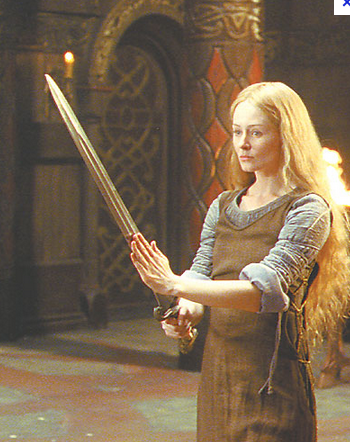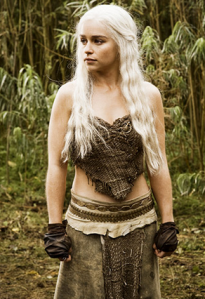Love Actually is generally considered a classic British Christmas film. As a nation, it seems to be a widely held belief that Richard Curtis can do no wrong, hence his festive offering to cinema is all over television every Christmas. Personally, it was never one of my favourite holiday films, although I could never pinpoint why. Recently I read a Jezebel article entitled ‘I rewatched Love Actually And Am Here To Ruin It for All of You’, in which Lindy West points out what, in her opinion, are the film’s many flaws. It’s not the best article I’ve ever read, but while I didn’t agree with all of West’s points, it did make me stop and realise that Love Actually is, actually, a horribly sexist film. Beyond the various plot inaccuracies and other minutiae that West focuses on, the women in the film are treated terribly and it is rife with misogynistic attitudes.

1. It’s a man’s world
This film is about straight, white, powerful men chasing and winning attractive women. Nearly every single male character holds an important, distinguished job: prime minister of the United Kingdom, managing director of a design agency, rock star, writer, videographer, the list goes on. While the female characters all assume stereotypically feminine roles: mother, housekeeper, secretary, member of the prime minister’s staff (What does Natalia even do? Her role is so unimportant, it doesn’t even seem to have a name, plus she loses the job for being too sexy and distracting soon anyway.) Immediately, we are shown that men are the powerful ones, assertive and in charge of things, while the women do their less important women things, like look after children and bring the tea and biscuits.
2. None of the women talk
All of the women who are considered conventionally attractive in the film barely speak. This is where West really got it right in her article, stating: ‘The less a woman talks, the more loveable she is.’ Colin Firth’s love interest? Doesn’t even speak the same language as him. He falls ‘in love’ with her only when she strips off (totally unnecessarily – he’s allowed to remain fully clothed when he jumps in after her) to dive into the pond in order to save his important manuscript. Again, this emphasises how important Firth’s character’s role as a writer is – women must disrobe and dive into scummy pondwater to save his serious, influential work. Then there is Thomas Sangster’s character, the sad child whose mum has just died. His love interest is only shown on screen once, at the end, and barely says a word. All she does is smile and sing. There is no communication between these men and the women they claim to love. We don’t learn about any of them as people, the only defining quality we are made aware of is their beauty.
3. Women, especially, do not talk to each other
Not only are these women not speaking to the men chasing after them, they’re not even talking to each other. Few of them even know one other. One of the film’s central devices is the way every character is connected to each other through some kind of elaborate show of the six degrees of separation. However, everyone knows a male character. No one is connected to another character through a female character, apart from Liam Neeson and Emma Thompson but we’ll get to her in a minute. It seems these women have no friends or lives to speak of beyond the men who fancy them. Women are shown speaking to each other maybe a handful of times, and it’s about men when they do. This film is miles away from passing the Bechdel test.
4. When the women do talk/act, they are punished
The only rounded woman character with a lot of lines is Emma Thompson. She is shown as the sad, nagging housewife and punished for her agency when her husband goes about buying jewellery for his young, attractive secretary. Then there’s Laura Linney’s character, who is caught up in a bizarre ‘no one likes someone with mentally ill relatives’ plot-line that is for another blog post entirely. Socially ostracised and busy ensuring her brother is okay, she will never be able to find happiness with Karl, her office love, whom she has never spoken to. When she does finally get the guts to pursue him, she ultimately fails and goes back to being sad. Once again, Richard Curtis shows us that women with agency do not end up happy.

5. Whereas men can do literally anything and still win a woman
Meanwhile, the men in the film are off doing creepy, inappropriate things that overstep socially accepted boundaries, like filming an entire wedding video of only close-ups of Keira Knightley’s face, and still being praised for it. This only furthers the concept of men doing strange things that are not okay and basically constitute stalking, (see also Lloyd Dobbler in Say Anything, outside your window with that boombox), and this being misconstrued as ‘romantic’. Whatever men do, however bizarre, they still end up with their love interest in the end. Liam Neeson’s character only has to bump into supermodel Claudia Schiffer in a school corridor before it is implied they are now ‘in love’. A mere five weeks after the death of his darling wife. Real nice.
This is not to say you cannot ever watch Love Actually again. Personally, I attempted to rewatch it this Christmas and turned it off after ten minutes in disgust. But that’s just me. So many things are problematic. If we restricted the things we enjoyed to solely non-problematic things, we would all probably end up sitting around twiddling our thumbs a lot because there would be nothing to watch or read or do. You can watch problematic films and still enjoy them, you just have to acknowledge that they’re problematic and not make excuses for them. There’s no excuse for Richard Curtis creating a film where there are no well-rounded women characters with a comparable amount of lines to their male counterparts. Does this suck? Yes. Does it mean you can’t ever watch this film again? Probably not. That part’s totally up to you.







